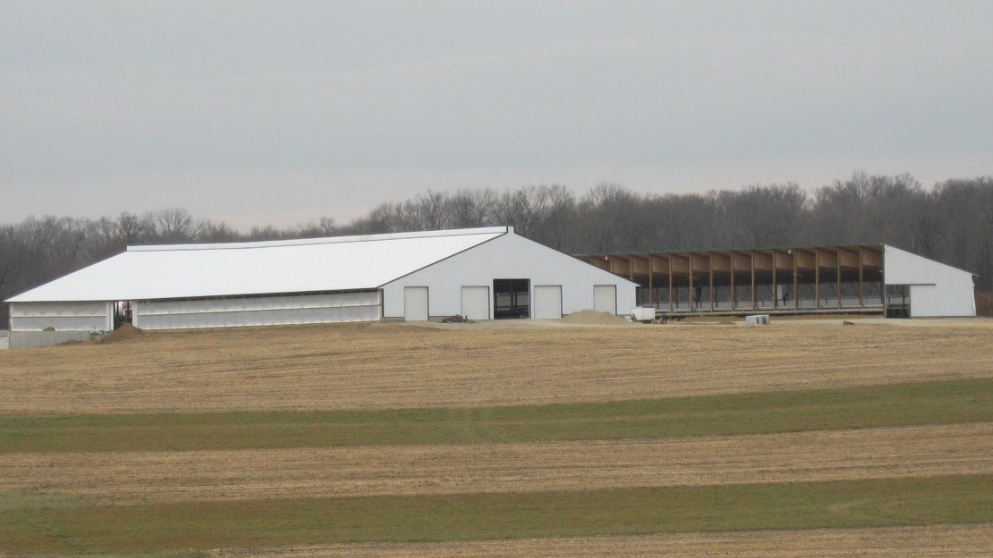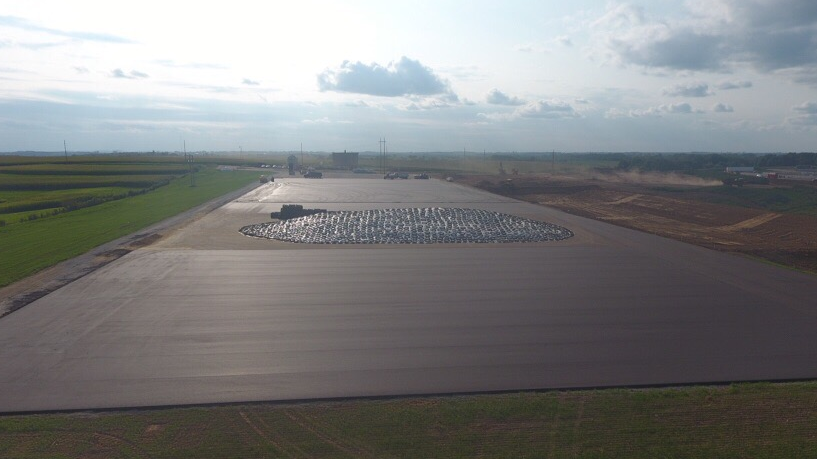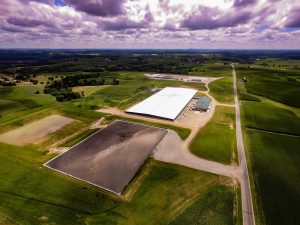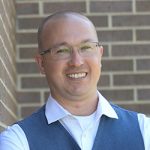Farmstead planning for growth
Kieler Farms, Inc. is a multi-generational family operation specializing in dairy, beef and crop production since 1947. The farm now includes 11 facilities and spans over 3,300 acres, but its growth required some strategic problem solving and big-picture visioning to succeed. To best tackle the challenges, the family obtained assistance with farmstead planning and learned how to navigate an often complex permitting process.

New heifer-raising freestall barn, a mono-slope beef finishing barn with under-barn manure storage.
More than your average dairy
In order to grow, the Kielers needed to make decisions and establish definite goals. One important decision was to determine whether or not to become permitted—a designation that brings with it specific regulatory requirements for things like pollutant limits, management practices and operational standards. For the Kielers, becoming a permitted farm was the right decision, so they moved toward that goal and drafted plans to upgrade their operations accordingly.
The family’s top goal was to construct a brand new dairy incorporating a 50-cow rotary parlor, a cross-ventilated freestall barn, mechanical sand separation and both waste and feed storage facilities. Yet, Kieler Farms aspired to become more than your average dairy farm. They wanted to create something unique and community-oriented—incorporating agri-tourism into the mix and opening a modern dairy education center.

Watertight asphalt feed storage at the new 2,000 cow dairy. The project was awarded the 2017 Innovation Award by Wisconsin Asphalt Pavement Association for watertight asphalt design. Photo courtesy of Renee Clark.
Setting an environmental benchmark
Another goal was to have their facilities be environmentally superior. The family decided to collect all farm waste and wastewater, instead of simply collecting the required, lesser amount. They also agreed to recycle and reuse water, recycle sand bedding and increase separation distances to restrictive layers. Additionally, they chose to construct a watertight asphalt feed storage container with an underdrain system that serves as a secondary collection measure. This choice, over a watertight concrete option, also saved the family a significant amount of money.
Kieler Farms has become a benchmark dairy operation. Their decisions and investments will continue to benefit not only their family, but their community and the greater environment for generations to come.

